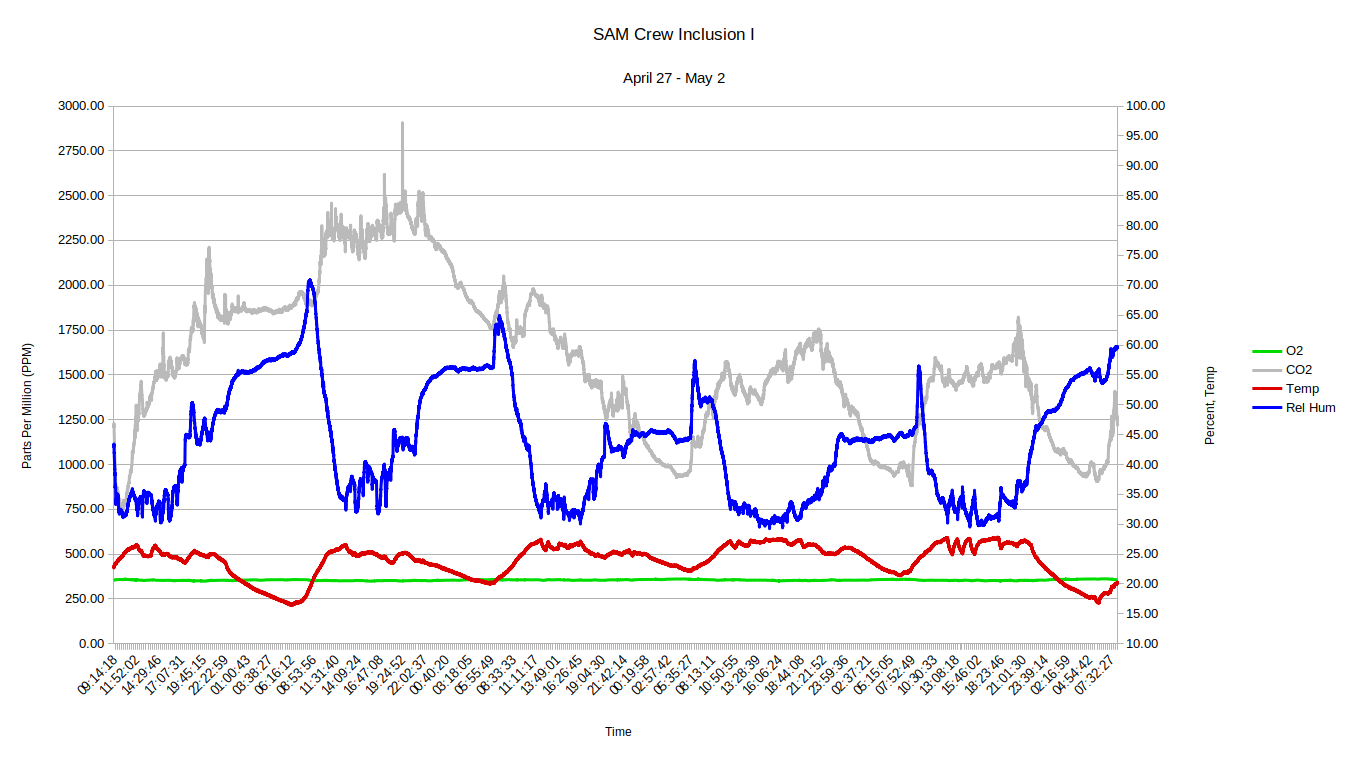
July 2022 – July 2023
SIMOC Kiosk
As far back as 2018, just one year after the inception of SIMOC at the Arizona State School of Earth and Space Exploration, the Arizona Science Center had expressed interest in developing an interactive, educational SIMOC experience for its citizen scientist and student visitors. Initial training on the use of SIMOC was conducted in 2019, but shortly thereafter COVID forced a pause in the collaboration.
In the summer of 2022 the relationship was rekindled, and the SIMOC team dove into development of a kiosk version of SIMOC, that is, a version that will operate with reduced keyboard input (mouse + number pad) and no immediate means to exit from the web interface. The Arizona Science Center will initially use SIMOC in live demonstrations and interactive discussions about the challenges of living off-world in the confines of an isolated habitat.
SIMOC B2
In 2019 SIMOC team lead Kai Staats conducted plant biology research at Biosphere 2 (B2) to generate a first-order dataset to further inform the SIMOC plant growth models. B2 Deputy Director John Adams took interest in SIMOC and proposed a version of SIMOC modeled after the original Biosphere 2 experiments. With recent updates to the agent-based model and support for more intricate agent definitions it became possible to satisfy John’s vision. Inspired by the conversations with John, Kai recognized the opportunity to model real-world ecosystems and approached Editorial Director Tyson Brown at National Geographic Society. In turn, Nat Geo and B2 provided funding to support development of this unique project.
As a number of updates to SIMOC had to be accomplished prior to the core work on a model of the historic Biosphere 2, July and August were dedicated to a substantial back-end rewrite of the Plant growth model. SIMOC developer Grant Hawkins revisited the original reference data from the NASA CELSS experiments and took cues from industry-standard models such as APSIM and CERES to rewrite the plant growth algorithm to be based on light availability and biomass accumulation. This laid the foundation for B2 integration, and accurate simulation of outputs under ideal (the original plant growth model built upon NASA data) or constrained (the first and second B2 missions) conditions. The details of this project will be published and presented to the ICES conference in July 2023.
While the graphical web interface is the main public-facing mode of interaction, we took steps to make the core Agent Based Model (ABM) usable in any Python programming environment, such as Jupyter Notebook. This involved isolating the ABM from the web server, writing documentation for the key classes, functions and methods involved in designing and running a simulation, and building a template for adding completely new agents and functionality. This has since been used to develop published research and (at least) one PhD thesis. We hope to continue to develop this interface as a way of engaging the technical community while also continuing to support and prioritize the web interface for education.
In summary, the intense development of September ’22 through January ’23 saw an incredible addition of new assets in the SIMOC code that both enabled the SIMOC B2 simulation and laid the foundation for a broad, future application of SIMOC across a number of research and modeling disciplines.
SIMOC Live
In the fall of 2021 and spring of 2022 the foundation for live data capture, storage, and presentation was developed by five Arizona State University Computer Science Capstone students, four of whom joined the SIMOC team following completion of their degree. This early prototype was installed in the under-construction SAM as a demonstration for the 2022 Analog Astronaut Conference. Further development was lead by SIMOC developer Ezio Melotti during his three months residence at the Biosphere in the fall of 2022, with support for a variety of Adafruit and Vernier sensors, dynamic, flexible web interface panels, and reliable data storage. This revised version of SIMOC Live was the central air quality monitor for the first and second crews sealed inside of SAM, April and May 2023 respectively, as noted in this blog entry (and the image at top).
Open Source
With the completion of kiosk mode in the fall of ’22 and the B2 module in early ’23, the SIMOC team moved to bringing SIMOC to open source, something that had been in discussion since the very beginning. To do so is not small endeavor, for the code itself required a top-to-bottom review, consolidation and cleaning, commenting, and an improved installation method and associated documentation.
In July 2023 SIMOC was released as 100% open source, and announced from the floor of the International Conference on Environmental Systems (ICES), Calgary, Ontario.
You can download and install SIMOC locally, today!

